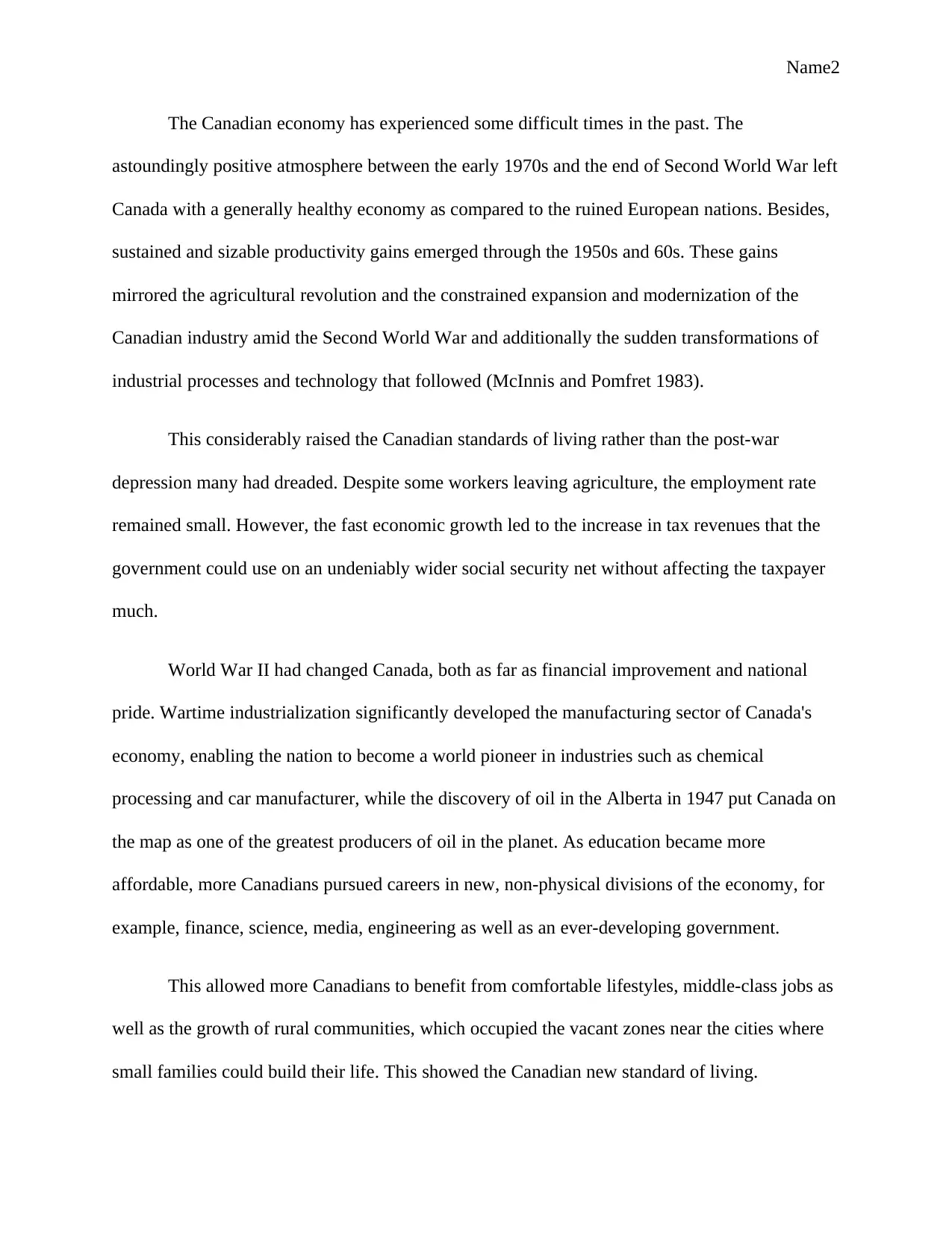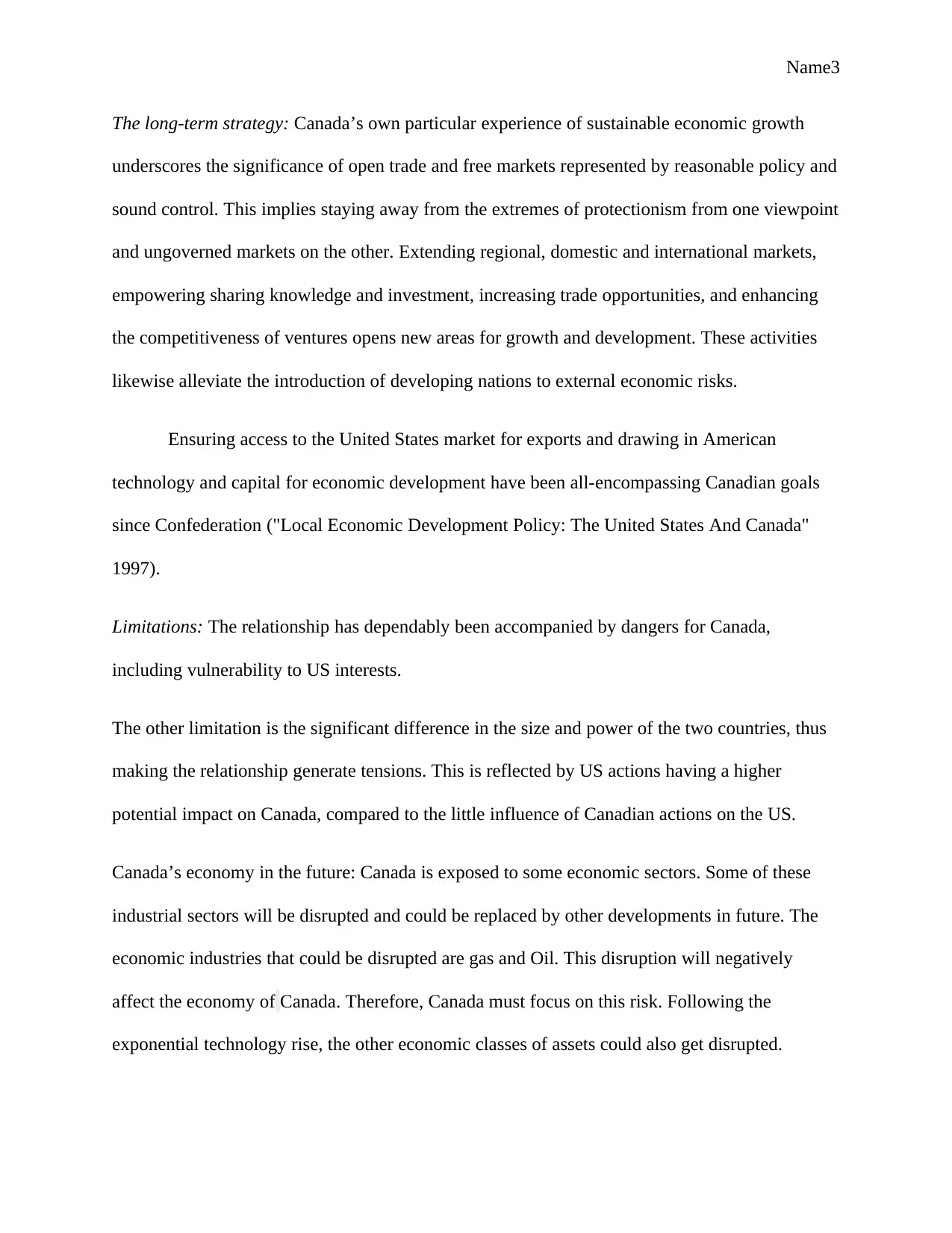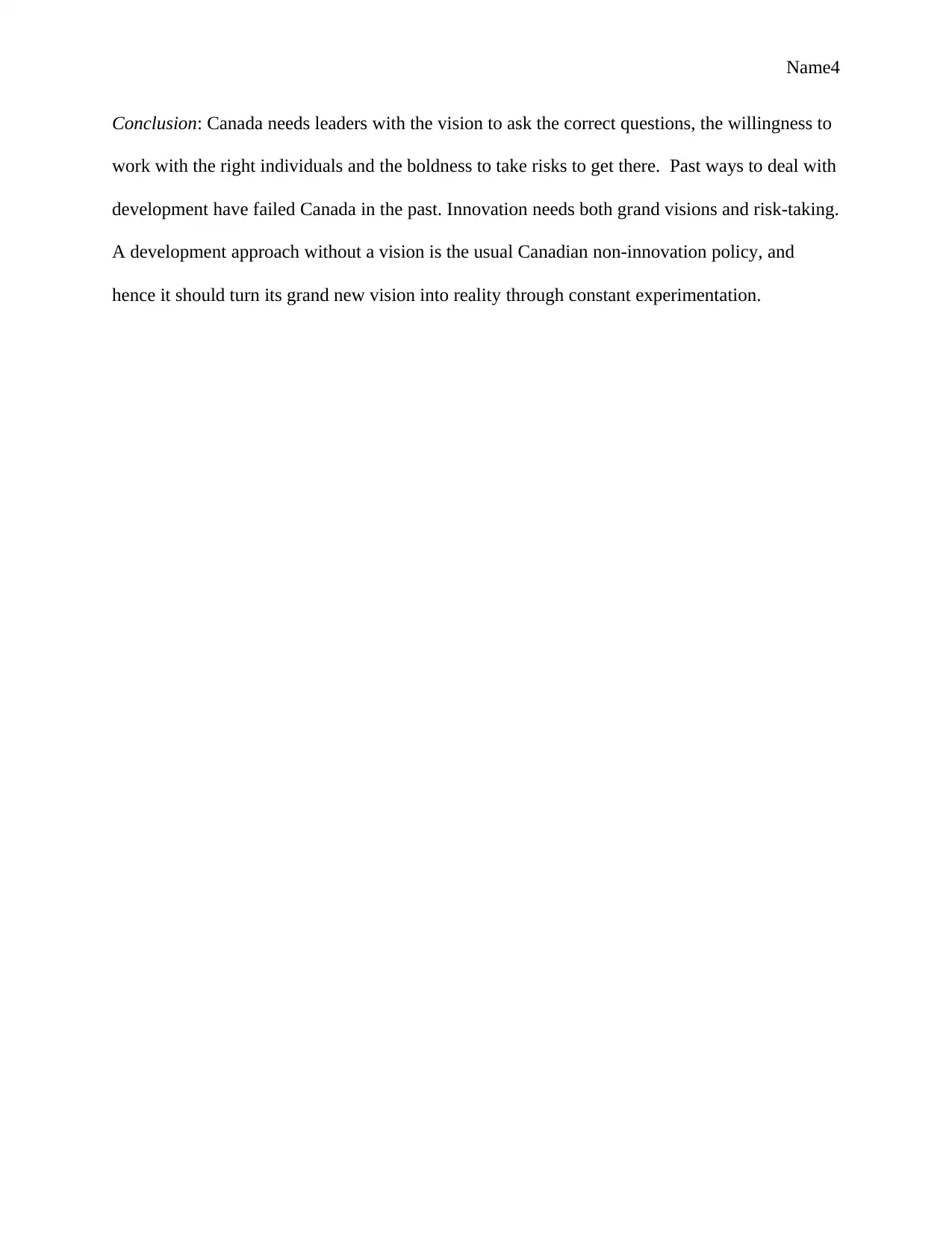Canada's Economic Development: Post-War Growth and Challenges
VerifiedAdded on 2021/05/25
|5
|751
|35
Report
AI Summary
This report provides an analysis of Canada's economic development, focusing on the period after World War II. It highlights the positive economic climate of the early post-war years, driven by industrialization, technological advancements, and the discovery of oil. The report details the growth in manufacturing, the rise of new sectors like finance and technology, and the resulting improvements in the standard of living for Canadians. It emphasizes the importance of open trade, free markets, and sound policy in sustaining economic growth while acknowledging the limitations of the relationship with the United States. The report also addresses potential future challenges, such as disruptions in the oil and gas sectors and the impact of technological advancements. The conclusion stresses the need for visionary leadership and a willingness to embrace innovation to navigate these challenges and ensure continued economic prosperity for Canada.
1 out of 5












![[object Object]](/_next/static/media/star-bottom.7253800d.svg)